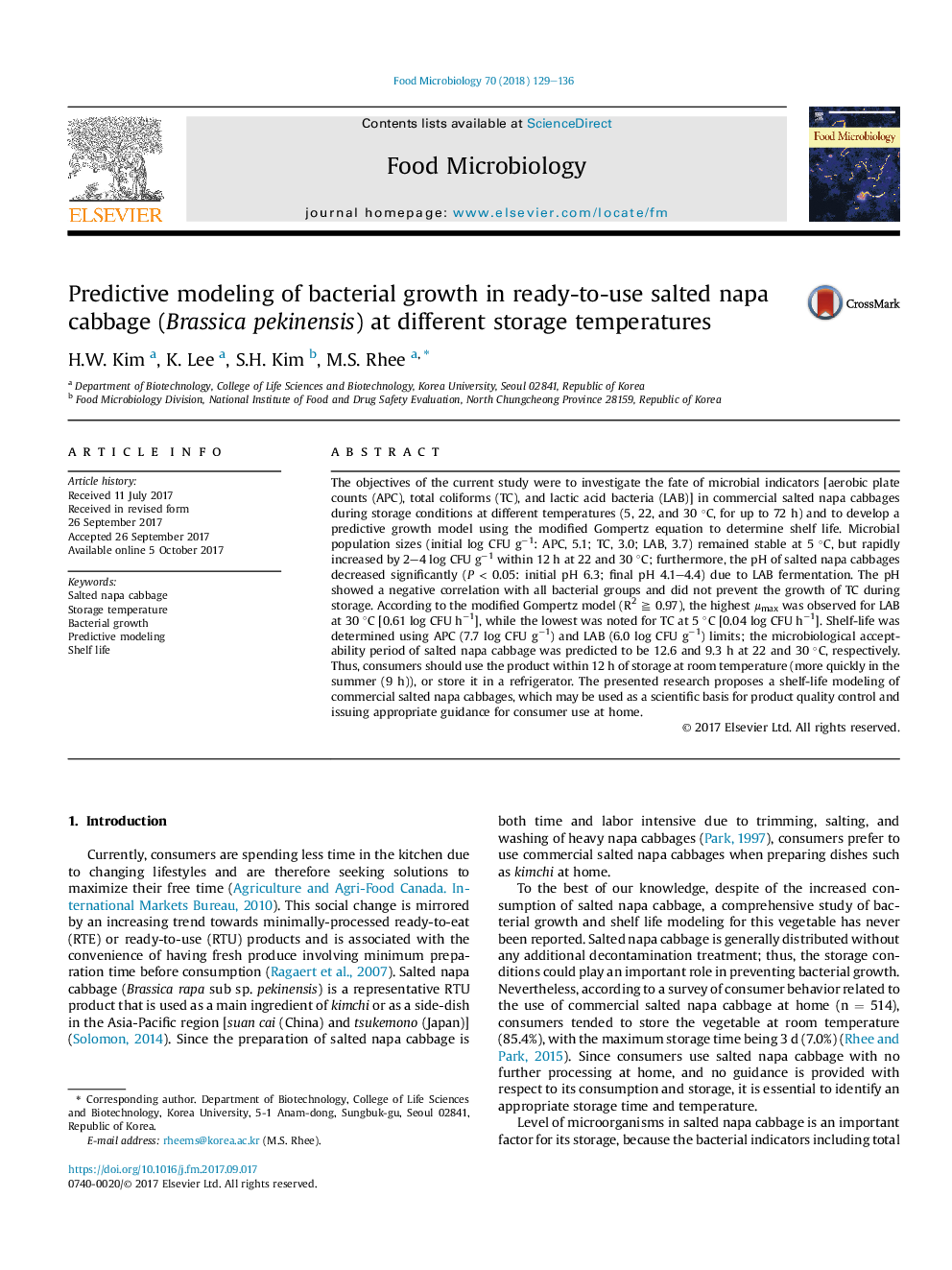| Article ID | Journal | Published Year | Pages | File Type |
|---|---|---|---|---|
| 5740014 | Food Microbiology | 2018 | 8 Pages |
Abstract
The objectives of the current study were to investigate the fate of microbial indicators [aerobic plate counts (APC), total coliforms (TC), and lactic acid bacteria (LAB)] in commercial salted napa cabbages during storage conditions at different temperatures (5, 22, and 30 °C, for up to 72 h) and to develop a predictive growth model using the modified Gompertz equation to determine shelf life. Microbial population sizes (initial log CFU gâ1: APC, 5.1; TC, 3.0; LAB, 3.7) remained stable at 5 °C, but rapidly increased by 2-4 log CFU gâ1 within 12 h at 22 and 30 °C; furthermore, the pH of salted napa cabbages decreased significantly (P < 0.05: initial pH 6.3; final pH 4.1-4.4) due to LAB fermentation. The pH showed a negative correlation with all bacterial groups and did not prevent the growth of TC during storage. According to the modified Gompertz model (R2 ⧠0.97), the highest μmax was observed for LAB at 30 °C [0.61 log CFU hâ1], while the lowest was noted for TC at 5 °C [0.04 log CFU hâ1]. Shelf-life was determined using APC (7.7 log CFU gâ1) and LAB (6.0 log CFU gâ1) limits; the microbiological acceptability period of salted napa cabbage was predicted to be 12.6 and 9.3 h at 22 and 30 °C, respectively. Thus, consumers should use the product within 12 h of storage at room temperature (more quickly in the summer (9 h)), or store it in a refrigerator. The presented research proposes a shelf-life modeling of commercial salted napa cabbages, which may be used as a scientific basis for product quality control and issuing appropriate guidance for consumer use at home.
Related Topics
Life Sciences
Agricultural and Biological Sciences
Food Science
Authors
H.W. Kim, K. Lee, S.H. Kim, M.S. Rhee,
